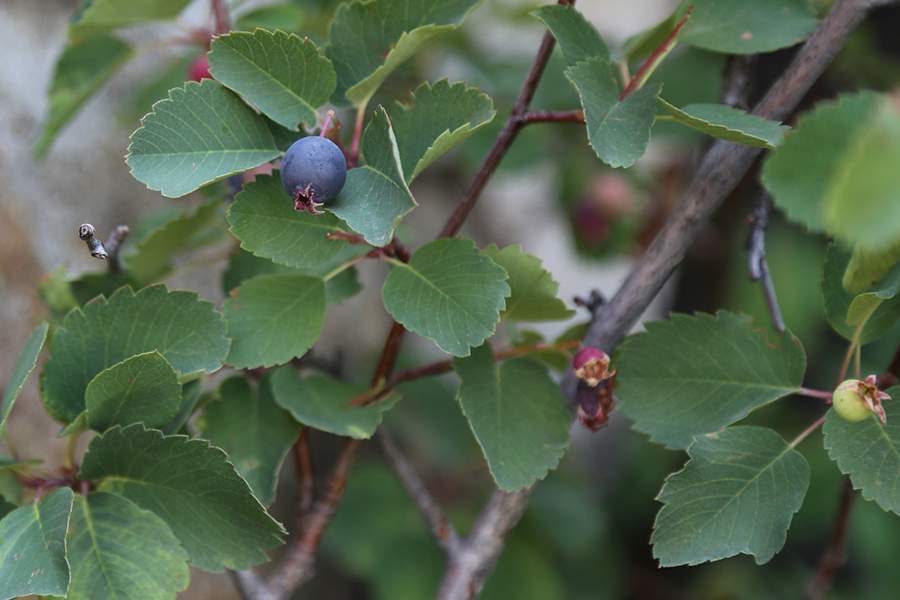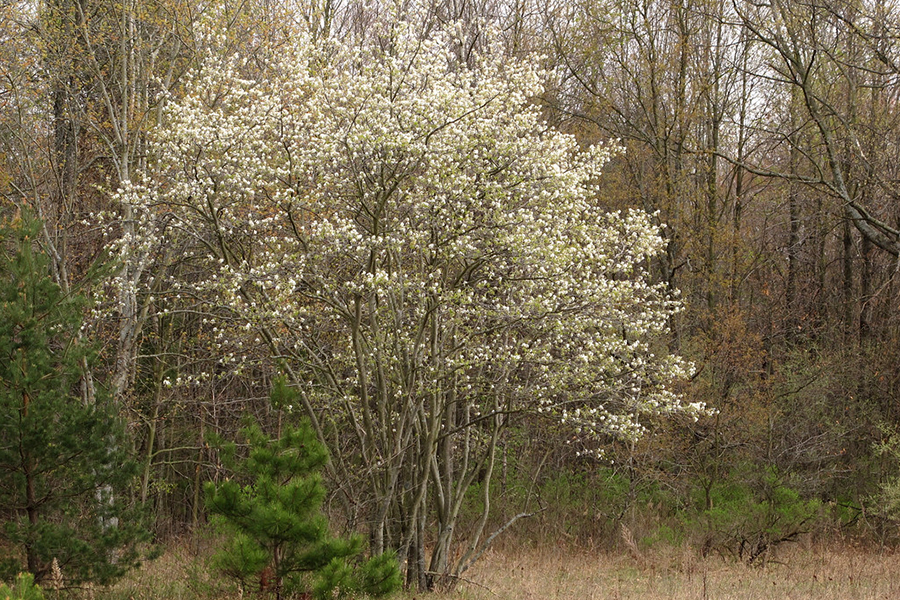Amelanchier spp.
Serviceberries are small, flowering trees with sweet, edible fruits enjoyed by both humans and wildlife.
Location
Today, a handful of serviceberries can be found in the arboretum. The majority are found at the corner of Lovell and May Street. See if you can spot some in the pollinator garden.


History at Hadwen
Records from 1882 indicate that serviceberries were among the species originally planted by Hadwen. However, despite their historical presence, these trees were conspicuously absent in all tree surveys until their reappearance in 2020. The newest serviceberries in the arboretum were planted in collaboration with the Worcester Native Plant Initiative.
Keep Learning
Detailed Species Information
Serviceberry (Amelanchier), also known as shadbush or saskatoon, represents a genus of deciduous trees and shrubs within the family Rosaceae. Primarily inhabiting temperate North America, some species extend throughout the continental United States. The taxonomic classification of serviceberries is challenging due to their ability to hybridize and produce seeds asexually, but approximately 20 species are generally recognized in the genus. Notable species in New England include downy serviceberry (A. arborea), Canada serviceberry (A. canadensis), and smooth serviceberry (A. laevis).
Depending on the species, serviceberries can reach a height of up to 65 feet (20 meters), although many are considerably shorter. These trees often exhibit a multi-stemmed or shrub-like form, with some species adopting a more typical tree structure, as seen in downy serviceberry. The bark is typically gray and smooth, developing subtle vertical striations with maturity. The leaves are simple, egg-shaped, green, and alternately arranged on the stem, usually finely serrated. Characteristic white, five-petal flowers of serviceberries emerge in spring, maturing into berry-like fruits during the summer. These edible fruits, ranging in color from red to purple or black, offer a sweet and fruity taste. Typically found in forest understories, especially along streams, serviceberries thrive in well-drained yet moist, nutrient-rich soils, displaying some tolerance to shade. The fruits serve as a crucial food source for wildlife.
Due to their small size, serviceberries are not commercially utilized for lumber, yet their hardness and fine grain make them well-suited for woodworking. Many serviceberry species produce edible fruit, often harvested for baked goods, wines, jams, or consumed raw. In landscaping, serviceberries are highly popular due to their compact size, attractive foliage, white flowers, and edible fruits.
